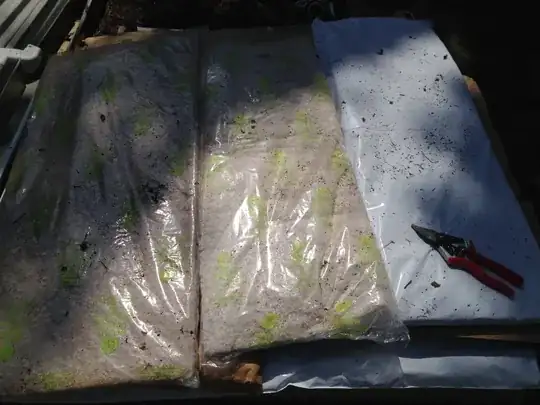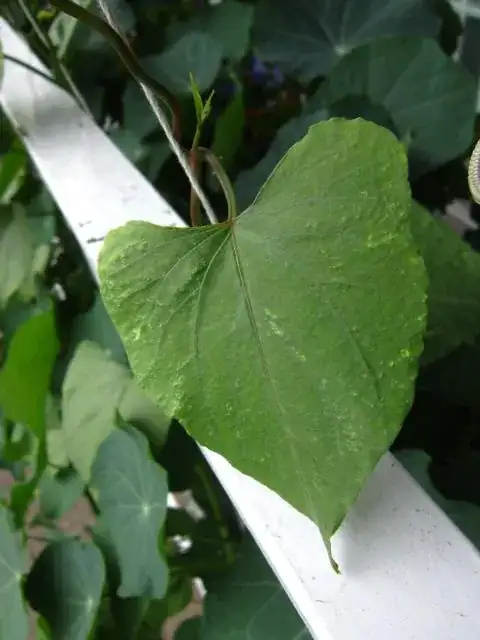The deeper or larger the organic matter mass decomposing the more heat is released and if too small a mass insulation will allow the process of decomposition to continue during the cold temperatures of winter. Decomposers (bacteria, fungi, insects) need a bit of extra nitrogen to use for energy to do their job, a bit of moisture, air and an internal temperature of at least 50 degrees Fahrenheit or warmer. The bigger the pile the more insulation, the more heat can be built up in the mass, to allow decomposition by the decomposers. Too tiny of a mass will just have to wait for spring for heat to continue the decomposing.
You could cover your first bin with straw, (after stirring the original pile), sprinkle with water, add a bit of nitrogen and then cover the pile with straw and perhaps a tarp. I would not make your pile smaller by dividing it and putting part of it in the second bin. That would definitely mean the cold temperature of both little piles will be too low and that will stop decomposition.
If the pile is not large enough or insulated enough there will not be the heat necessary to give the decomposers the chance to get rolling which will create its own heat engine.
By spring, at least the original pile will be usable as compost. Maybe. I don't know enough about your compost habits. In the spring, if you are able to make out the constituents of your compost such as leaf shapes, sticks, a tomato end...your compost is not ready to be used as 'decomposed organic matter'.
It is not a deal breaker if you use this compost that is not fully decomposed in the spring. With heat that compost will continue to decompose, as all things once alive have to be decomposed and just as long as you understand the difference between decomposed organic material and undecomposed organic material for your soil you will be fine.
In the spring, if your compost isn't completely decomposed grab the stuff in the center of your pile that has a crumbly texture and sprinkle it on top of your beds, in the spring, what isn't decomposed will continue to decompose quickly with the heat, moisture and a bit of Nitrogen.
Too much nitrogen will be harmful to your plants so be careful. If you are using this compost undecomposed the decomposers will be first to use any Nitrogen available at the expense of your plants. If you add too much nitrogen you could either kill your plants or you could cause plants grown for fruit/flower/gourds/edible reproductive parts to not offer any decent harvest. You'll get lots of vegetative growth instead of reproductive growth.
Sounds as if you've got a great composting bin built! I think a third bin should be built. A yard each bin is a lot and you'll find, too much means anaerobic and stinky. That third bin will help an awful lot. Compost is meant to build up the tilth of soil not to be used in place of balanced fertilizer.
The deal with decomposed material versus non decomposed organic matter such as straw, leaves, grass clippings is that your macro and micro soil organisms in the soil necessary for symbiosis with your plants go dormant or die without food in the form of decomposed organic matter. They 'wait' until there is food in the form of decomposed material.
Once you put decomposed organic matter on top of your beds and soil, the soil organisms wake up, start reproducing, come to the surface to eat this stuff, go back down into the soil profile (4 to 6") poop it all out and mix organic matter into your soil (without any other energy on your part). This makes a soil that is alive. Has great tilth. This is what 'fertile' or 'rich' soil means. Does not mean all the chemistry necessary for photosynthesis is present in that soil.
Compost is all about making any soil better whether clay or sand; friable, air filled, better draining, soil with life working with the roots of the plant to uptake certain chemistry. (not nutrients). Compost is not meant to be used as fertilizer (as some composts have some of the chemistry a balanced fertilizer would add but will most likely put the Nitrogen level up higher and possibly too high.
Adding compost, hopefully decomposed, to the surface of your plant beds (great for weed suppression, too) should be seen as 'feeding your soil' food to enhance the micro and macro soil life that supports the plants you want to grow, the organisms doing the work of mixing organic matter into your soil to increase friability and drainage and air or tilth of your soil. (Not for use on indoor potted plants that should be planted in sterilized potting soil).

